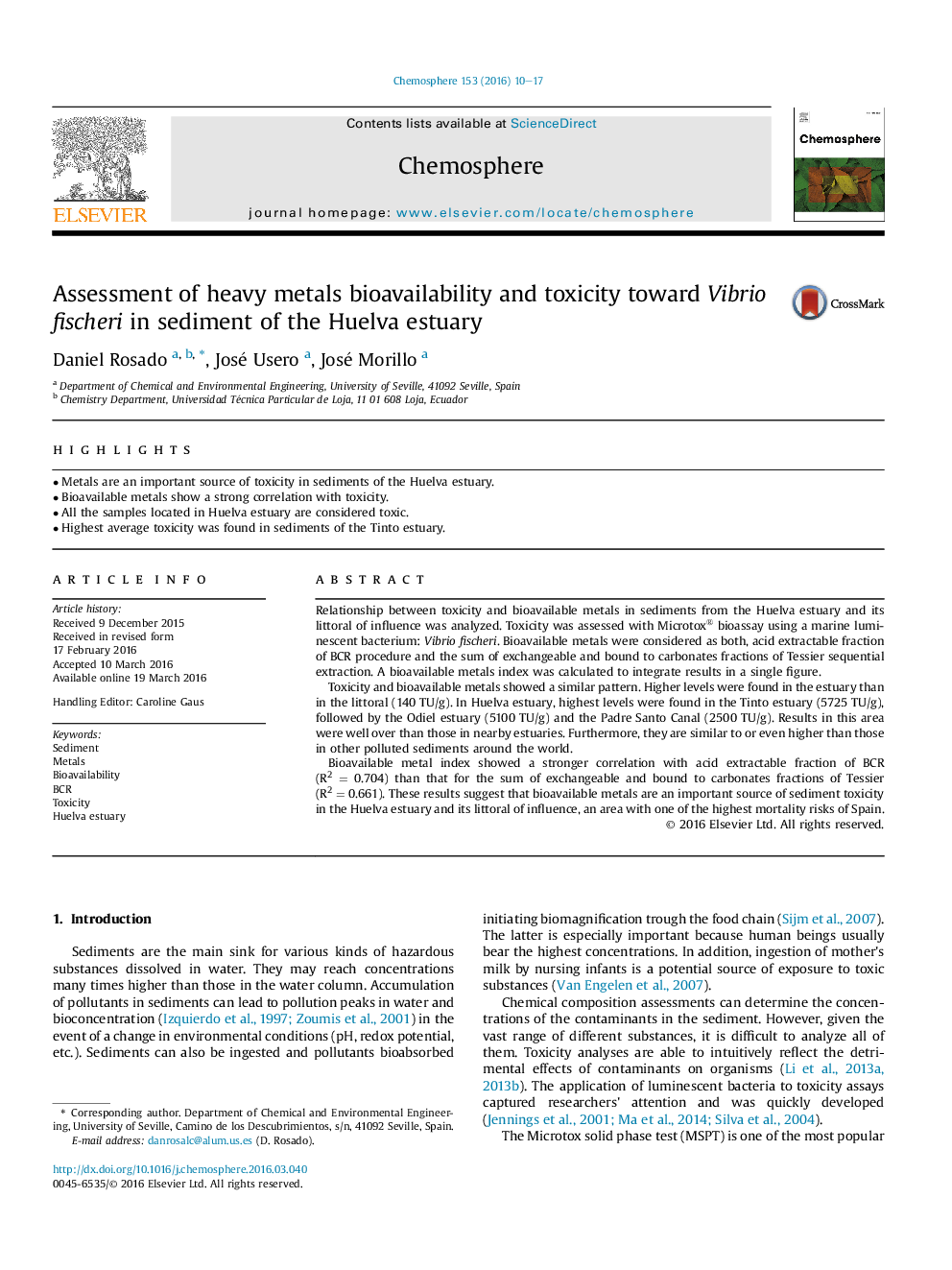| Article ID | Journal | Published Year | Pages | File Type |
|---|---|---|---|---|
| 4407651 | Chemosphere | 2016 | 8 Pages |
•Metals are an important source of toxicity in sediments of the Huelva estuary.•Bioavailable metals show a strong correlation with toxicity.•All the samples located in Huelva estuary are considered toxic.•Highest average toxicity was found in sediments of the Tinto estuary.
Relationship between toxicity and bioavailable metals in sediments from the Huelva estuary and its littoral of influence was analyzed. Toxicity was assessed with Microtox® bioassay using a marine luminescent bacterium: Vibrio fischeri. Bioavailable metals were considered as both, acid extractable fraction of BCR procedure and the sum of exchangeable and bound to carbonates fractions of Tessier sequential extraction. A bioavailable metals index was calculated to integrate results in a single figure.Toxicity and bioavailable metals showed a similar pattern. Higher levels were found in the estuary than in the littoral (140 TU/g). In Huelva estuary, highest levels were found in the Tinto estuary (5725 TU/g), followed by the Odiel estuary (5100 TU/g) and the Padre Santo Canal (2500 TU/g). Results in this area were well over than those in nearby estuaries. Furthermore, they are similar to or even higher than those in other polluted sediments around the world.Bioavailable metal index showed a stronger correlation with acid extractable fraction of BCR (R2 = 0.704) than that for the sum of exchangeable and bound to carbonates fractions of Tessier (R2 = 0.661). These results suggest that bioavailable metals are an important source of sediment toxicity in the Huelva estuary and its littoral of influence, an area with one of the highest mortality risks of Spain.
